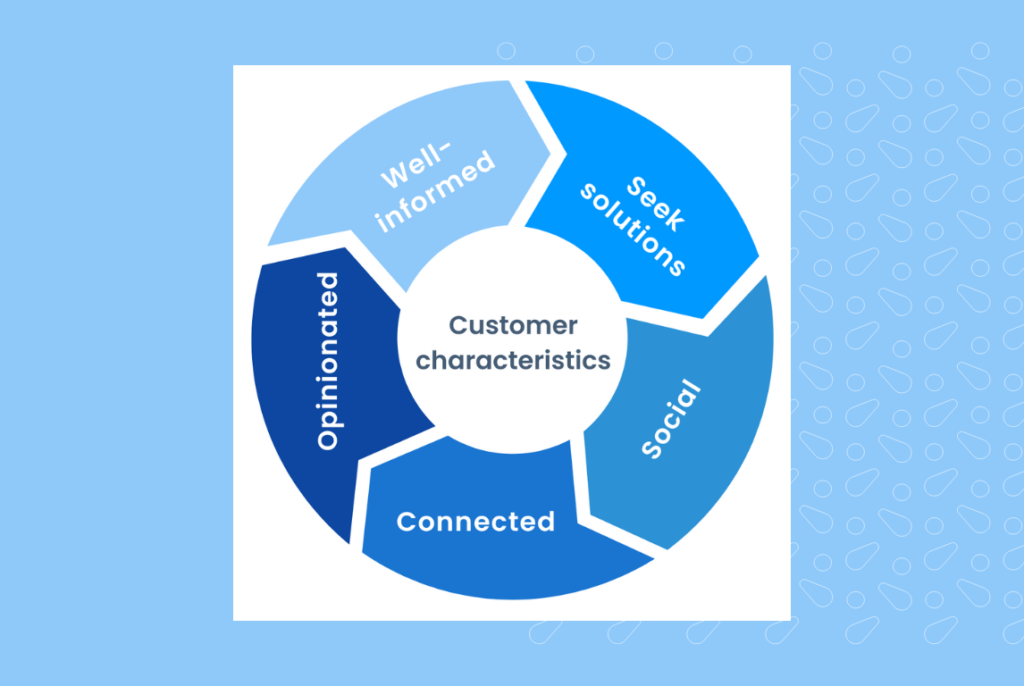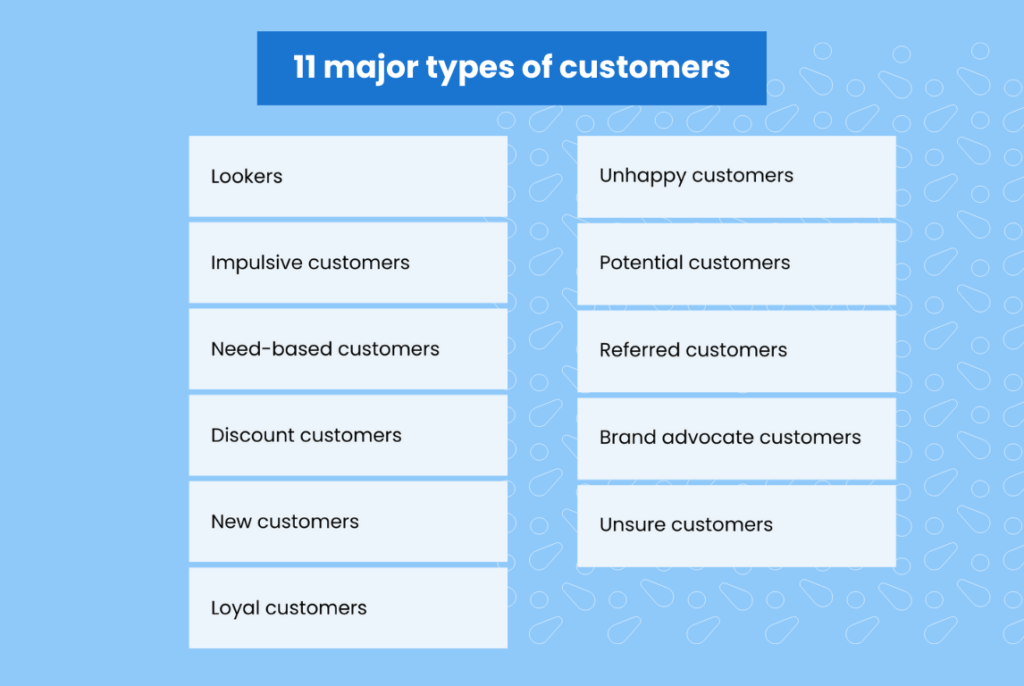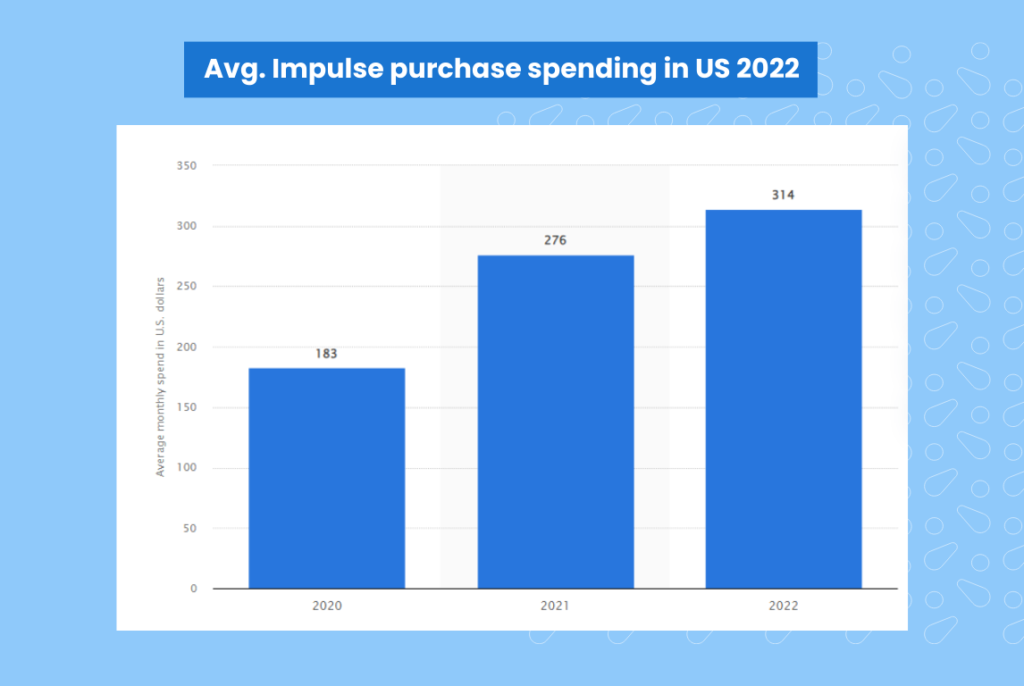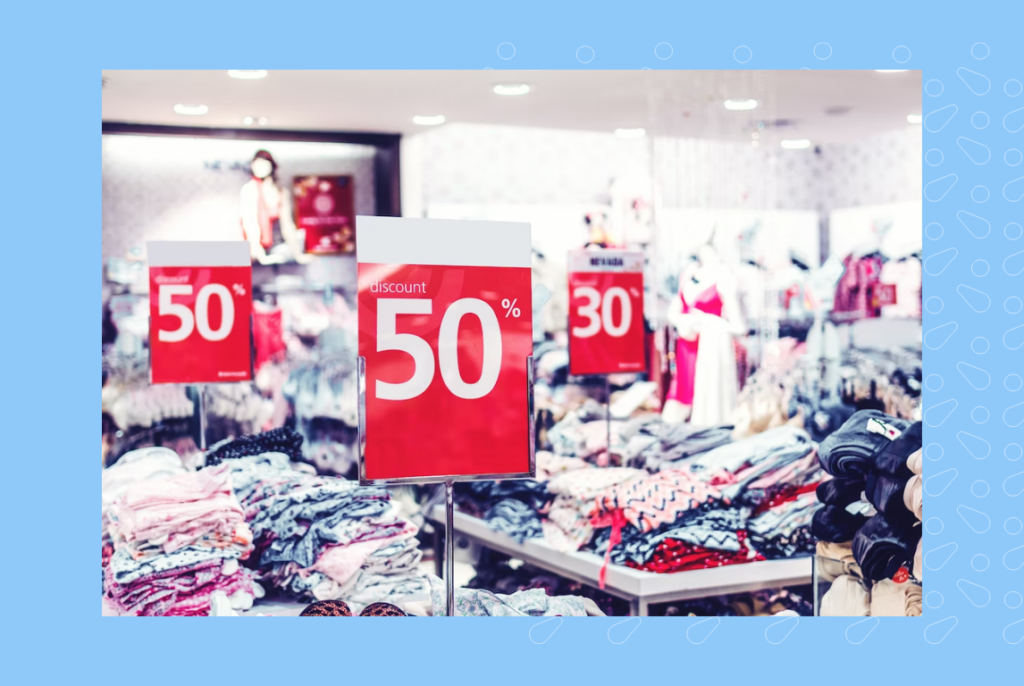Your business wouldn’t exist if it weren’t for your customers. But not all customers are the same. Each customer you target comes with unique temperaments, making a one-size-fits-all approach ineffective. And that is why it is important to understand the different types of customers before designing a marketing strategy.
With this blog post, you will learn how to segment your target audience based on the various customer types in the market.
Table of contents
Common characteristics of a customer
In the business world, a customer is a very broad term. They have many similarities and differences. That is why we deem it important to divide them into different groups to understand them better.
But before we dive into the differences, understanding what unites customers worldwide will set off in the right direction.

Effective customer service is based on knowing what your customers expect, want, and need. And most customers typically share these common characteristics:
- They’re well-informed: Customers today are fully-connected to the realities of the buying market and tech-savvy. They learn everything possible about a company and its offerings before making a purchase.
- They seek solutions: Most purchase decisions originate from a problem solving perspective for either a want or a need. They seek solutions and would not hesitate to turn to customer service for precise answers to their pain points, questions, and problems.
- They’re social: Almost 50% of the world population is now online and use the medium to express opinions and share experiences online. So, most customers can be expected to engage with their favorite brands and product lines on social media.
- They stay connected: In continuation to the social behavior, customers leverage multiple channels and devices to keep in touch with their preferred brands.
- They’re opinionated: Being well-informed, tech-savvy, and connected enables customers to draw their own conclusions and form strong opinions about products, services, ethics, and branding, to name a few.
While these are some common characteristics that customers worldwide exhibit, it is important to conduct research into your brand’s target audience to obtain a more accurate profile.
11 major types of customers
A business’s success depends on its ability to appeal to the target audience. It is important to position yourself strategically so that your business becomes valuable for the customer. Typically, a business’s target audience comprises people from all walks of life exhibiting various purchase behavior.
We have listed the common types of customers a business may encounter. Understanding what interest each type can help you appeal to them and improve your conversion rates.

Lookers
The lookers are possibly the largest types of customers a business encounters. They’re just browsing, as the name implies, and considering your services alongside your competitors. They’ve probably shown interest but remain undecided.

To attract them, try:
- Capturing their attention by enhancing your website’s allure through intriguing design and compelling copy. Effective website engagement strategies can nurture their attention to the right places and towards buying.
- Providing exceptional customer experience. Remove any obstacles and objections. They don’t like intrusive pop-ups and disruptive ads, for example. Look for navigational difficulties, too, or slow customer service, which can both be new customer deterrents.
Remember, small customer-centric details can make or break their journey to becoming loyal customers.
Impulsive customers
Impulsive customers are another type of customers you’re likely to meet. These buyers make purchases spontaneously, without pre-planned intentions.

For best results with impulsive customers:
- A seamless customer experience is key here. Make it incredibly easy to opt in and make a purchase. Any obstacles will only send these buyers looking for a hassle-free alternative.
- Use time-sensitive and hard-to-resist offers. These customers often respond well to time-bound deals with a sense of urgency.
- Maintain crisp, compelling website copy. This can help sway the impulse user towards making a purchase decision in your favor.
Need-based customers
Need-based customers are prevalent in every industry. Driven by very specific needs, they come to you with a predetermined shopping list. And if they find what they’re looking for on the first try, they’ll usually quickly buy and exit.
- These customers are difficult to upsell because they’re laser-focused on your brand satisfying a particular need and nothing else. They often show less brand loyalty and will switch to competitors’ products if their needs are better satisfied.
- To retain these customers, focus on developing positive interactions and building a relationship. Customer service plays a vital role here, as these customers may leave if their needs aren’t adequately met.
- Good customer experience and special benefits can urge these customers into becoming loyal customers.
Discount customers
Discount customers are primarily interested in your product if it’s offered at a discount, and they rarely purchase at the regular price. It is important that when you have a new discount offer, you communicate that to these customers and reap the benefits.

Discount customers are deal-seekers. They appreciate a clear understanding of the offer. Providing prompt customer service or live chat options can inspire quick purchasing decisions and enhance their customer experience.
These customers can be challenging. Yet, with the right approach, they can be huge assets in your sales funnel.
At all times. emphasize the added value they’re receiving, even at the discounted price. The core message should be reinforcing the great deal they’re getting, so that they keep coming back.
New customers
New customers represent a unique category. They often arrive with first-time queries or require assistance but might not always express their needs upfront.
- While these customers are in the early stages of exploring your product or service, they’re not looking to be upsold. Their primary need tends to revolve around an introduction to your brand. And they usually seek guidance for basic issues.
- Even if these requests aren’t the most complex, customer service and customer support teams have to make great first impressions. Those first impressions lead to further engagement and, eventually, the transformation into loyal customers.
- Patiently guiding new customers helps retain them and lays the foundation of trust. It’s easier to convert them later compared to discount customers.
Loyal customers
Loyal customers might be the most important to a business. They’re a significant asset to your business as they consistently return, buy often and potentially influence others to buy. They already trust your brand and appreciate the customer experience. This improves the conversation rate significantly.
However, it’s essential to understand what factors sparked this loyalty initially and leverage them in your go-to market strategies.
- Showcase those loyal customers through sharable case studies or testimonials that can enhance their value perception and provide additional social proof for your business.
- Engage with these customers often and understand why they stay loyal. Discover what elements about your brand or their experience transformed them into loyal patrons to replicate the results.
Unhappy customers
Unhappy customers pose a unique challenge in the diverse roster of customer types. These people will express dissatisfaction in the form of customer service complaints, subscription cancellations, social media posts, or negative reviews. Don’t ignore the disgruntled because they’re potential customers, too.
Develop an engagement strategy for the unhappy customers to reduce churn rates and improve brand reputation.
- Monitor interactions on your social media platforms. Read all your online reviews, and actively supervise your customer service channels. Identifying dissatisfied customers early will prevent escalating issues.
- Proactively follow up using support tools. Ask them for precise concerns in a way that helps you identify company mistakes or breakdowns. Know what they’re unhappy about to quickly identify solutions.
- Get them talking with you, be empathetic in your responses about their grievances, and use action steps you’ll take to provide resolutions. These steps can very well convert unhappy customers into buying ones.
Potential customers
Potential customers are in the exploration phase of buying. They’re not all impulsive. Instead, most spend time gathering information and considering their options before making a purchase.

Because they have an interest, they’re different from unintentional website visitors. With a tailored strategy, you can guide these interested prospects into becoming customers:
- Build compelling first impressions: Your company website and online profiles have to be visually appealing and user-friendly. Avoid pop-up ads, difficult to navigate sections, and complicated purchase processes.
- Showcase value: Use assets like testimonials and case studies to present the benefits of purchasing from you. Product reviews are also great tools for persuading potential buyers within the sales pitch.
- Nurture leads: Follow up immediately with next steps should they engage with your resources or contact forms. Then, include them in a nurture campaign to keep their interest over time and until they’re ready to buy.
- Be available: If they’re interacting with you, they expect you to respond. Have a 24/7 strategy in place to answer questions and provide assistance.
Referred customers
Referred customers are those who find your brand through the advocacy of your existing customers. These customers have high expectations, despite being unfamiliar with your services otherwise. Work to guarantee that their experience aligns with the praise that led them to you:
- Implement a comprehensive onboarding plan: Welcome these referred customers and guide them through your product in detail to set the right expectations. The onboarding process must make them renew their trust in your brand.
- Determine their expectations: Discover their expectations by asking what they already know about your brand from the referrer. This way, you can get on the same page with them quickly.
- Nurture them: Since they’ve come through a trusted recommendation, make sure their experience validates their decision to choose your brand.


Brand advocate customers
Brand advocate customers are an exceptionally profitable customer group for your business. Advocates champion and actively promote your brand. Their recommendations improve your reputation, lead volume, and conversion rates.
Make sure to take care of advocates to maintain their satisfaction with your company and core offerings.
- Feature and promote these advocates in case studies, on social, and with testimonials. Endorsing them publicly validates their commitment and encourages further advocacy.
- Don’t drop the customer service ball with these types of customers. Verify that your service quality is on point and meets their expectations.
- Be available throughout their brand journey to address any needs that arise. Because they’re promoting you, be quick to resolve issues promptly and provide continued value. A strong commitment to their success will keep these advocates as reliable customers.
Unsure customers
Unsure customers resemble lookers but struggle with decision-making. Nurturing and informing are your best strategies here.
- Make all your contact channels, including chatbots and live chat options, readily available. Timely assistance can guide them off the fence and toward a favorable decision.
- Emphasize your Unique Selling Proposition (USP) and overall value proposition, aligning with their customer needs. Offering unique solutions and superior customer service can tilt the balance in your favor.
- Be there at each step of their journey. Personalized assistance can transition them from a state of uncertainty to becoming a convinced potential customer, eventually morphing into insistent customers and expanding your customer base.
Why does every type of customer need different attention?
We have seen the motivations for each type of customer to do business with you can be quite different. And that is why most experts recommend using unique approaches for each customer type.
Additionally, each type of customer differs by the following factors, demanding a personalized approach:
- Needs: Every customer, depending on their unique problem or situation, expects and requires a personalized approach. Some need swift service, some need discounts, while some need extraordinary measures to keep happy. Understanding the type can help you identify the right need.
- Expectations: Customers, especially in today’s on-demand market have high expectations. Just as their needs vary, so will their expectations. A personalized experience becomes crucial to find the right strategy.
FAQs about types of customers
In business, customers can be split into two distinct types: prospects and existing customers: those you need to win over and the existing customers who can be nurtured into long-term loyalty.
The five types of customer markets are consumer products, professional services, industries, retail, and transportation.
Major consumers are those big players with real purchasing power, not individual one-off product buyers. They include large corporations, government bodies, or sizable non-profits. It’s these big fish that steer the market currents.
In the business world, four primary customer needs are price, convenience, choice, and expectations. Addressing these needs build ongoing customer loyalty and satisfaction.
Conclusion
Understanding the incredible diversity among customer types – from impulse to loyal customers is critical for business success. Knowing what types of customers you have and are targeting can help tailor your customer service and engagement strategies.
Understand your customers and work to foster deeper relationships, enhance customer satisfaction, and build unwavering brand loyalty.

Originally published


![this is a 1 / 1 – [Feature image] of the blog about 31 irresistible car sales email templates to close more deals.](https://birdeye.com/blog/wp-content/uploads/Feature-image-31-irresistible-car-sales-email-templates-to-close-more-deals-375x195.jpg)
![[Feature image] Are you on these 40+ powerful eCommerce review sites blog](https://birdeye.com/blog/wp-content/uploads/Feature-image-Are-you-on-these-40-powerful-eCommerce-review-sites_-375x195.jpg)